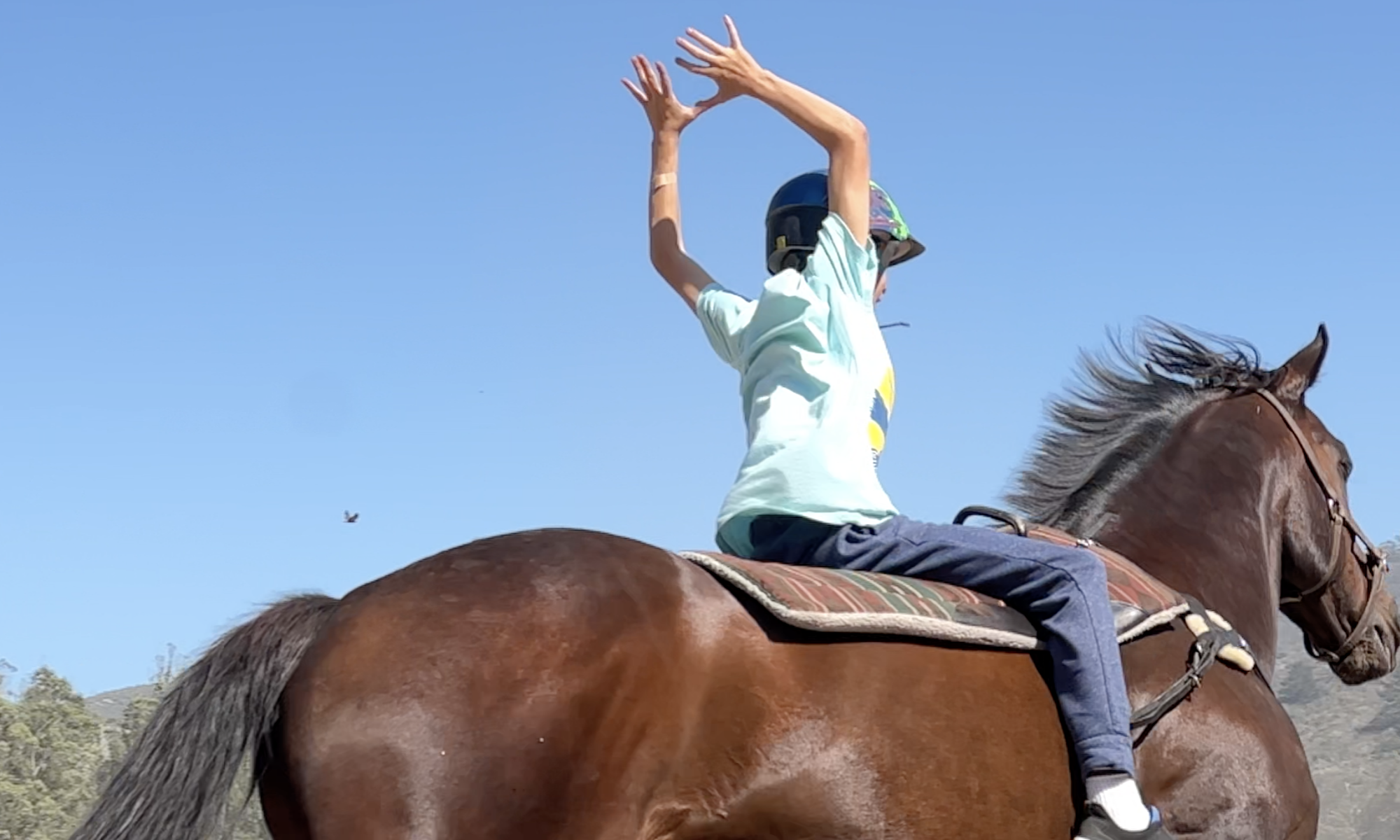Atherton eyed the carrot with a disgusted look. Implying that I could leave the carrot in her feed bin, she might eat it later. Her servant beamed and lovingly stroked the mare’s immaculate coat.
“What’s her name?” I asked.
“Atherton” came the proud reply.
“What do you call her?”
The servant blinked as she tried to figure out why I’d asked the same question again and answered
“Atherton.”
Atherton is the exception and not the rule.
Because most of us give our horse a barn name. Something we call him in lieu of his registered or given name. I mean, you can’t just waltz into the barn and call out “Hello Dox Ruby Red Design” or croon “Easy there Admiral Winston ZX. ” Can you?

I’ve learned that the barn name can tell you a lot about a horse and his owner.Â
For instance, cowboys are practical and thrifty. There is a “Red” at every ranch, as well as a “Grey Dog,” a “Blackie” and the inevitable “Spot.” The one exception to this rule is the horse named “That-Big-Good-Lookin’-Horse-I-Got.” This horse packs around this huge moniker no matter what his registered name is. The cowboy can be heard telling tales of his favorite mount: “So I’m in the box on That-Big-Good-Lookin’-Horse-I-Got, and the steer…….” Or “I had to go out and gather cattle with Jim, so I load up That-Big-Good-Lookin’-Horse-I-Got…………….” Or “hey Jeff, get your mangy butt off That-Big-Good-Lookin’-Horse-I-Got……….” When you ask the cowboy the actual name of this horse, he’ll scratch his head and say “I dunno, but my wife calls him Meat-head.”
Pony names are great. You know what you’re up against just by the barn name. For instance; Gus is a packer, and Button is as cute as one. Otis and Bart will buck you off. Ernie is terribly mischievous and Tess could probably terrorize a snake.
Endurance horses are cool. There’s always a Star, a Flash, a Magic and a Zephyr. These horses invariably earned their name and are easy to identify.
The Eventing crowd are more reflective than descriptive. They dub their horses according to the aspirations they have for their mounts. There’s always a King, a Champ, a Victor and a Princess. Well then there’s Crash, whose name just stuck.

In the dressage barn, things get loftier. By naming your horse a foreign name, he automatically becomes more elegant. Joe is Johannes, Henry is now Henri, and Jack becomes Jacques. There’s Bella, Beau, Enrique and the flaming chestnut in the corner stall is (of course), Fabio.
The hunter/jumpers of the world are the Jet-Set. They tend to name their horses for places they have been or want to go. There’s Indio, Culpeper, Cairo and Montana. You might find Prauge, Perth, Peoria. and Martinique (sometimes referred to as Martin, sometimes known as Eek!) Woe to the poor creature who gets dubbed Winnemucca.

But racing takes the cake. With scores of horses coming in and out bearing official titles like “Classy Son By A Lot” or “Zam Zam’s Martini” the rule is that the name must be a single syllable title that somehow describes the horse. Naturally, Frog is the 2-year-old filly that tries to jump out from underneath you at the quarter mile mark and Grunt is the beautiful mare with an attitude she doesn’t keep hidden. Bob is the lanky black colt that’s not the sharpest knife in the drawer and Ike is the trusty gelding you can count (and bet) on. Needless to say, Pat is the horse whom you just can’t tell or remember whether he is a she or vice versa.

When choosing a barn name for your steed, remember the wise words of my dear friend to her students:
“Don’t ever call your horse something you don’t want him to be.”
This includes Dork, Bucky, Snort or Squirrel. Bear in mind of course that the lady bestowing this advice was mounted on a horse we lovingly called “Land Mine.”




















